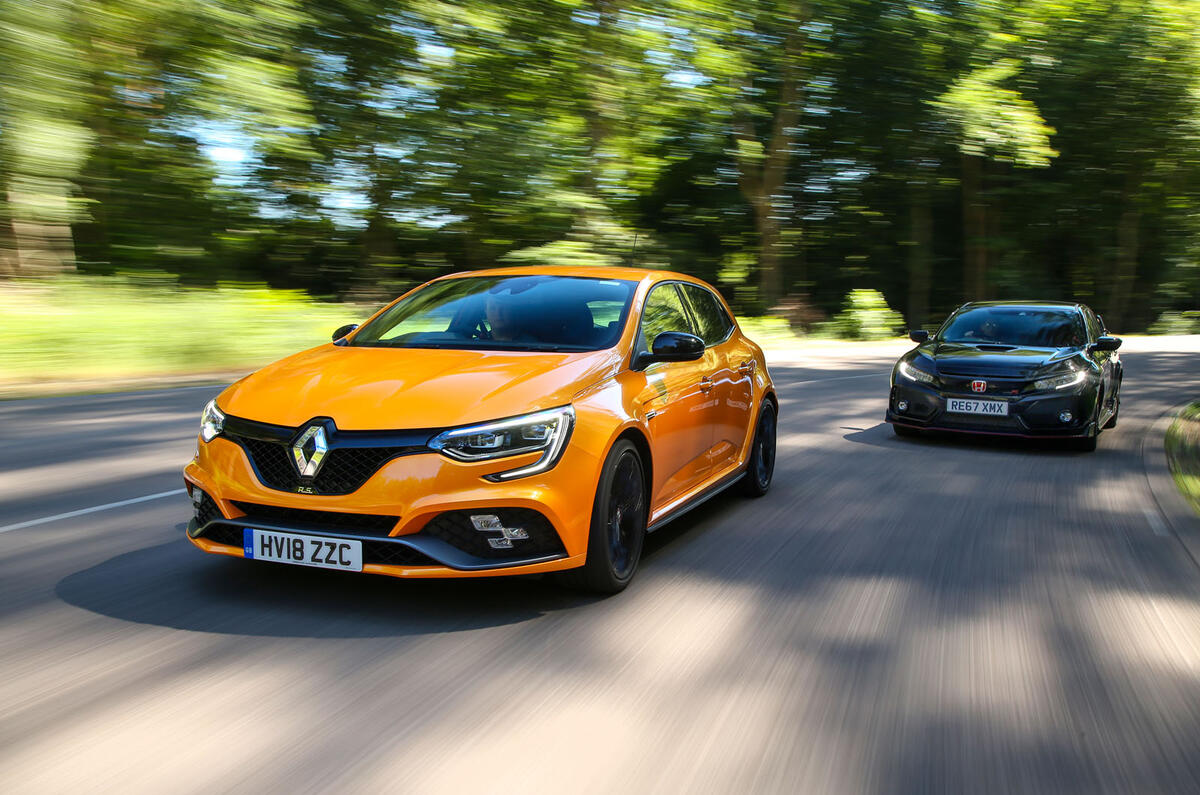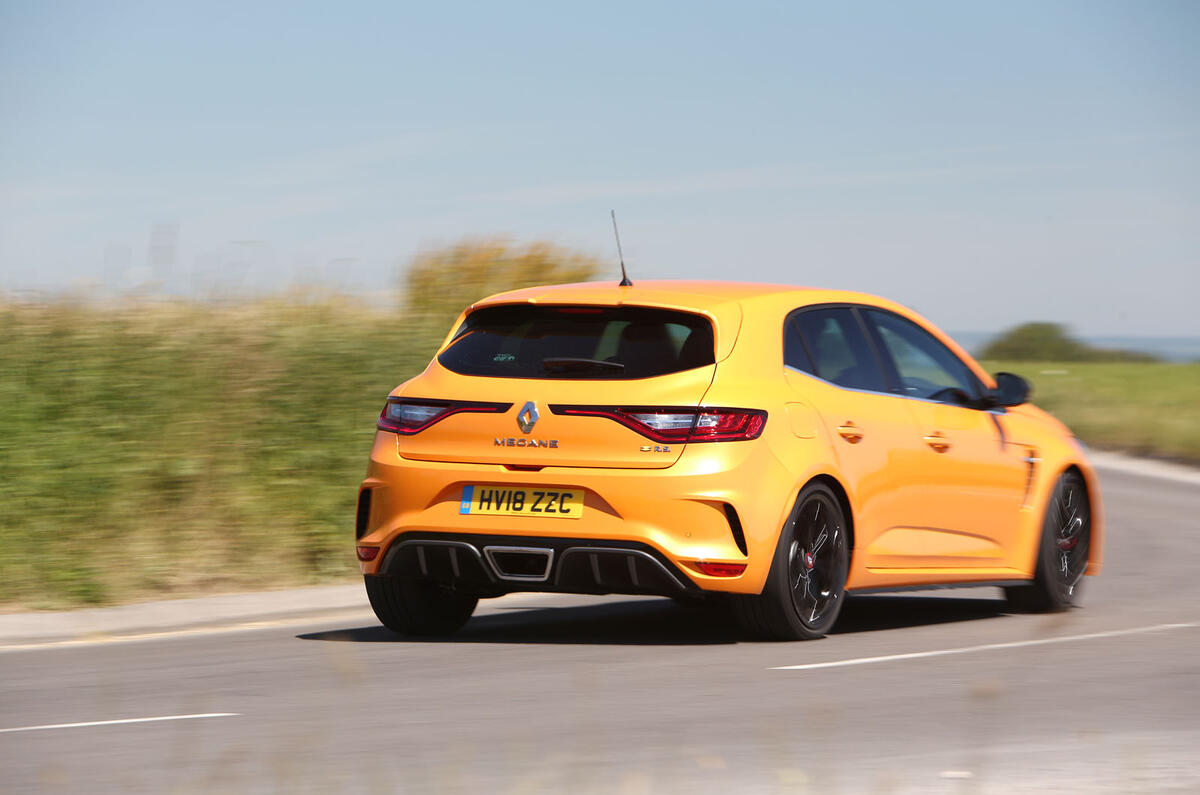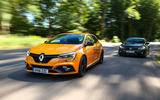If it was more widely known that B-roads this good could be found this empty in the generally bustling south of England, perhaps cars like ours would be a more common sight for the handful of locals who’ll see them zip by today.
For the time being at least, I’m quite pleased that fact isn’t more widely known. Very pleased indeed, actually.
Because right now, somewhere on the borders of Oxfordshire, Berkshire, Wiltshire and Nowhere-in-particularshire, gloriously inviting and blissfully quiet cross-country Tarmac is extending ahead of the front wheels of the new Renault MeÃgane RS 280 like the yellow brick road ahead of Dorothy and gang. Through the windscreen the road rises and falls, arcing gently one way before being thrust the other to disappear behind a verge or hedge – only to reappear a quarter mile or so nearer the crystal blue horizon. And just over that horizon? Membury Services and the teeming M4 motorway. Not exactly the Emerald City, I know – although they have got ANPR cameras these days. And a Waitrose.

This is the MeÃgane’s opportunity. Never mind that I’ve been driving it for a few hundred miles already and that it has failed so far to enliven my frontal lobes in quite the way that you’d hope a great hot hatchback would; that won’t matter if what it does here and now lives long in the memory. And if it doesn’t? There should be a Honda Civic Type R parked up in a gravel car park not far from here, ready to supply any fireworks that we may decide are missing.
This is the third-generation MeÃgane RS, its lineage stretching back some 15 years – and its reputation for outright handling eminence among fast front-drivers being the envy of the hot hatchback class. It’s still front drive, and still uses strut-type front suspension and a beam axle at the back. But this one adopts the 1.8-litre turbo petrol engine you’ll also find in the Alpine A110, wound up to 276bhp and on offer driving through a choice of six-speed manual or seven-speed paddle-shift ‘auto’ gearboxes. The manual’s much better, though, and that’s the one we’ve got here.





















































Join the debate
Add your comment
Cup chassis fro decently-surfaced roads then
It was bound to happen. If you want more effectiveness for track days or 'Ring times the suspension has to be stiffer, and so they did. That of course limits usability on poor roads, and unfortunately Britain is full of them once you leave Motorways and the better A roads. In fact B roads are simply appallingly surfaced once you start traveling and see what the rest of Europe offers as "B" roads (infinitely better surfaced and wider, even the mountain roads).
In other words, for mainland Europe the Cup chassis is fine, but not anymore for Britain (in this latest generation). It might be a mistake given how the UK is such a large market for hot hatches, but, unless you're a track day regular, the standard RS is definitely the one to go for in Britain.
Looks like Saunders is driving...
a van or something on the 2nd picture in the text. That dashboard belongs in something utilitarian. It spoils all the fun since that is what the driver will have to face everyday. The guy who let this design pass through ought to be shot.
voyager12 wrote:
Really ? I ve seen, far, far worse, like anything from Jaguar's current range, for instance.
What a wordy piece!
"The RS Megane that we tested has been tweaked for the track; try the softer version for the road!"
That is about the top and bottom of it but the writer goes on and on saying virtually nothing: if only his prose was as worthy as the old LJK Setright, it would be bearable but it is not. By a long chalk.
For one, I will reserve judgment until I read Motor und Sport and l'Auto-Journal.
you are so right
Autocar have been playing this silly gamer for many years now. And its not like they will anythime soon give us a test with the standard car nor the even better Megane from the last Generation. This is more poor jounalism. thanks, j